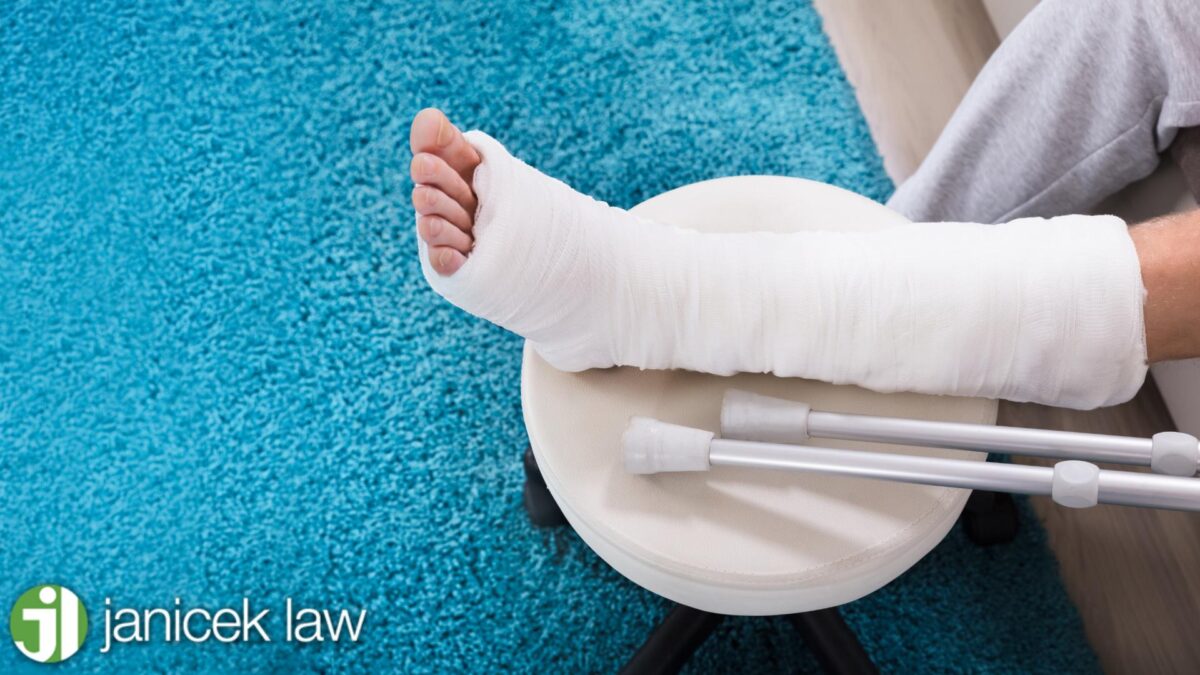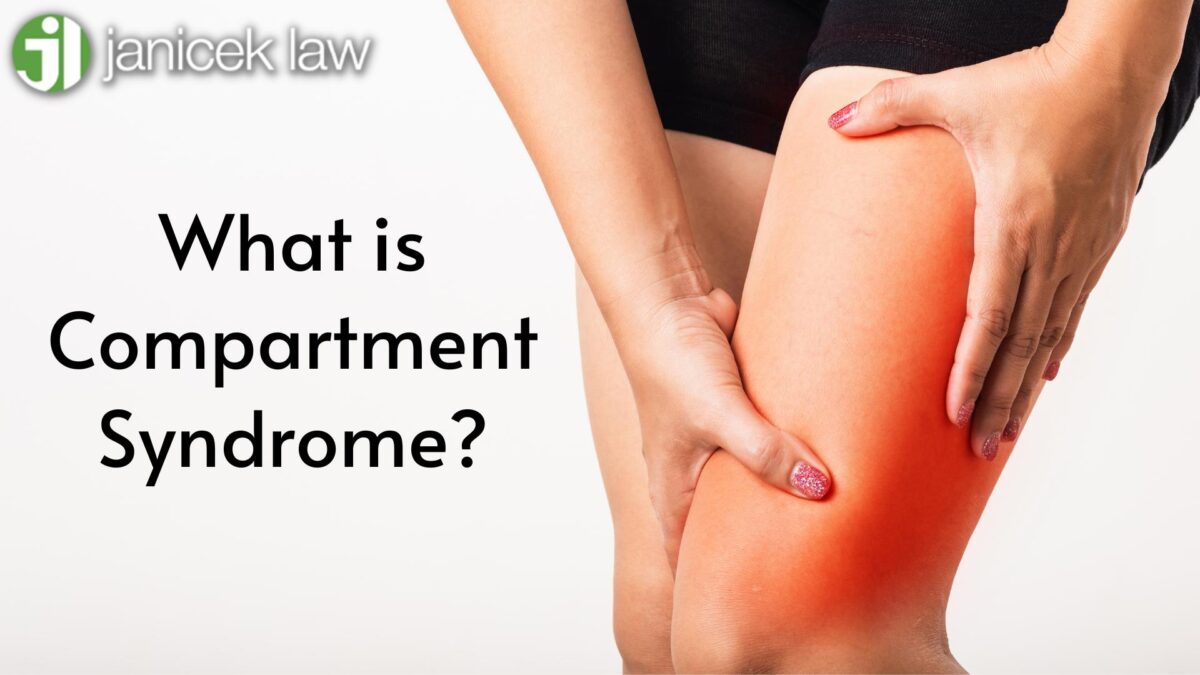Compartment syndrome is an injury that traumatic accidents can cause, like slip and fall accidents, motor vehicle accidents, or accidents where part of the body is crushed. When these injuries are severe, it’s referred to as acute compartment syndrome, and it can be life-threatening.
When part of the body has been crushed or had an increase in pressure, blood flow and other nutrients are cut off from the affected muscle area, which can lead to permanent injury. The areas of the body that are most likely to be affected by compartment syndrome are the legs, arms, and abdomen. If left untreated, acute compartment syndrome can result in paralysis, amputation, permanent nerve and muscle damage, or even death.
If you were involved in an accident that caused compartment syndrome, you have the right to file a personal injury lawsuit. San Antonio personal injury attorneys at Janicek Law have been helping their clients in personal injury lawsuits receive maximum compensation for over 25 years. To schedule a free consultation with one of our experienced personal injury attorneys, call 210-366-4949 today.
What is Compartment Syndrome?
Our body is made up of compartments that are groups of muscles, blood vessels, and nerves located in our arms and legs. The fascia, a tough membrane, covers these tissues and keeps them in place. Since the fascia is thick, it doesn’t move or stretch very easily.
When a person is involved in an accident or otherwise injured, they can sustain trauma to a compartment. Compartment syndrome is a muscular condition where the muscle pressure reaches a painful and dangerous level. This injury is usually caused by a traumatic accident that leads to swelling and internal bleeding in the affected area. The pressure that compartment syndrome causes can reduce blood flow, which keeps oxygen and nourishment from reaching muscle and nerve cells. Severe compartment syndrome can lead to permanent muscle and nerve damage and even death.
While compartment syndrome primarily affects the lower leg, it also can happen in other areas of the leg, feet, hands, arms, abdomen, and buttocks.
Types of Compartment Syndrome
Compartment syndrome is separated into two separate categories:
- Acute compartment syndrome is a medical emergency. It’s caused by major trauma from an accident or injury and is very painful. It’s crucial to treat acute compartment syndrome because the nerves and muscles can be permanently damaged, which can cause disability, paralysis, and death.
- Chronic Compartment Syndrome is not usually an emergency. It’s also known as exertional compartment syndrome since it’s usually caused by physical exertion from intense exercises. This is a reversible condition that will heal with rest and medical treatment.

Common Causes of Compartment Syndrome
A serious injury or physical overexertion can lead to bleeding or swelling in a compartment. Since the fascia doesn’t expand, the bleeding or swelling puts pressure on the muscles and nerves in the injured compartment. That pressure is referred to as compartmental pressure.
When the pressure reaches high levels, blood can’t reach the tissues. Without nutrients and oxygen, the tissues can die, which causes permanent compartment damage. Without treatment, these complications can lead to death.
Compartment syndrome can be caused by the following:
- Severe muscle bruising
- Crush injury
- Broken bones
- Tight bandages or casts that decrease blood flow
- A sudden increase in blood flow after poor circulation caused by blood clots, surgery, or loss of consciousness
- Repetitive, extreme exercises
- Anabolic steroids since they quickly increase muscle mass
Motor vehicle accidents, bicycle accidents, motorcycle accidents, truck accidents, and pedestrian accidents commonly cause traumatic acute compartment syndrome. Individuals involved in one of those accidents can suffer from broken bones, loss of consciousness, a crushing injury, muscle bruising, and more. Chronic exertional compartment syndrome is caused by sports injuries, intense exercise, and/or anabolic steroid use.
How Common is Compartment Syndrome?
According to a 2023 study, acute compartment syndrome affects 7 out of every 100,000 males and 0.7 out of every 100,000 females in the United States. A tibial shaft fracture is the most common cause of acute compartment syndrome occurring in up to 10% of the cases studied. It also found that men under 35 are at a greater risk of developing compartment syndrome because of the increased probability that they will be involved in higher levels of trauma and their larger intracompartmental muscle mass.
Compartment Syndrome Symptoms
Symptoms of compartment syndrome are:
- Paresthesias – a burning or tingling sensation under the skin
- Numbness in the affected compartment
- Visible swelling or bulging of the muscle
- Severe pain and tightness that is more pronounced when you try to move the affected area
How to Diagnose Compartment Syndrome
If you believe an injury has caused acute compartment syndrome, you must visit an emergency room immediately. These injuries are considered medical emergencies. Without an early diagnosis, they can have life-threatening consequences.
Medical treatment is still important for chronic compartment syndrome, but you can call your doctor instead of visiting the ER. These injuries are less severe, but treatment can help relieve pressure and help your recovery.
To diagnose compartment syndrome, your doctor will do some or all of the following:
- Physical exam: During your physical exam, your doctor will evaluate your symptoms to determine if your pain is caused by something else. Compartment syndrome can often be mistaken for tendonitis or shin splints since they have similar symptoms.
- X-ray: Your doctor may order an X-ray to check for broken bones.
- Compartment pressure measurement test: Since compartment syndrome involves increased nerve and muscle tissue pressure, your doctor will order this test to evaluate the exact pressure. The doctor will insert a needle in the affected compartment to measure the pressure. To complete this test, your doctor may insert the needle into other areas of your body to compare pressure readings.
How to Treat Compartment Syndrome
Your doctor will treat your compartment syndrome depending on which type you’re suffering from.
- Acute Compartment Syndrome: This injury requires immediate treatment. Your surgeon will perform a fasciotomy by making an incision through the skin and fascia to relieve pressure. If your acute compartment syndrome is in your abdomen, your doctor will perform a decompressive laparotomy. They will make an incision through the skin and abdominal wall to relieve pressure. After the compartment pressure has been reduced and the readings are normal, your doctor will close the incision. In rare cases, the patient will require a skin graft to place over the incision.
- Chronic Compartment Syndrome: Pain from exertional compartment syndrome usually affects the lower leg and generally will disappear once you’ve stopped exercising. However, it’s important to discuss this with your doctor as they may suggest additional treatments like:
- Pain medicine such as NSAIDs or other anti-inflammatory medications
- Low impact exercises
- Physical therapy
- Cross-training
- Orthotic inserts for your shoes
- Exercising on softer ground, like a running track instead of concrete
- If none of the above options relieve the pressure of your chronic compartment syndrome, your doctor may recommend a fasciotomy.

Compartment Syndrome Complications
Complications from not receiving treatment for compartment syndrome can result in the following:
- Permanent nerve injury
- Deformed or rigid muscles
- Permanent muscle damage
- Amputation of the lower leg(s)
- Paralysis in the lower leg(s) or other muscle compartment
- Death
Can You Sue for Compartment Syndrome?
If the negligence of another person directly caused your compartment syndrome injury, you can sue for damages. For example, if your compartment syndrome was caused by a car accident, you could file a personal injury lawsuit.
Proving Negligence in a Personal Injury Claim
For a personal injury lawsuit, it’s important to prove the four elements of negligence.
- Duty of Care: Everyone owes each other a certain standard of care to promote safety. For example, property owners must ensure that their premises are free of any dangers that can cause a slip-and-fall accident. Another example is that drivers must use reasonable care when driving and not act negligently, like driving under the influence.
- Breached Duty of Care: A property owner or motorist breached the duty of care.
- Causation: The victim suffered from acute compartment syndrome due to the breached duty care.
- Damages: The injured individual suffered damages from compartment syndrome due to the above and is entitled to financial compensation.
A San Antonio personal injury attorney at Janicek Law will work along with you to prove the four elements of negligence to ensure that you receive maximum compensation for your injuries.
Personal Injury Damages
The San Antonio personal injury attorneys at Janicek Law will help you recover financial compensation for the following damages:
- Lost wages
- Past and future medical bills
- Past and future physical therapy expenses
- Loss of earning capacity if the compartment syndrome resulted in disability or paralysis
- Emotional distress
- Physical pain and suffering
- Loss of consortium
- Loss of enjoyment of life
Call a San Antonio Personal Injury Lawyer at Janicek Law Today
If you suffered severe trauma due to another’s negligence resulting in an acute compartment syndrome diagnosis, you have the right to recover financial compensation. San Antonio personal injury attorneys at Janicek Law have over 25 years of experience advocating for their clients in various personal injury claims like car accidents, premises liability, and more. Our goal is for you to receive maximum compensation for your injuries so that you can focus on your recovery. To schedule a free consultation with one of our personal injury attorneys, call us today at 210-366-4949.

